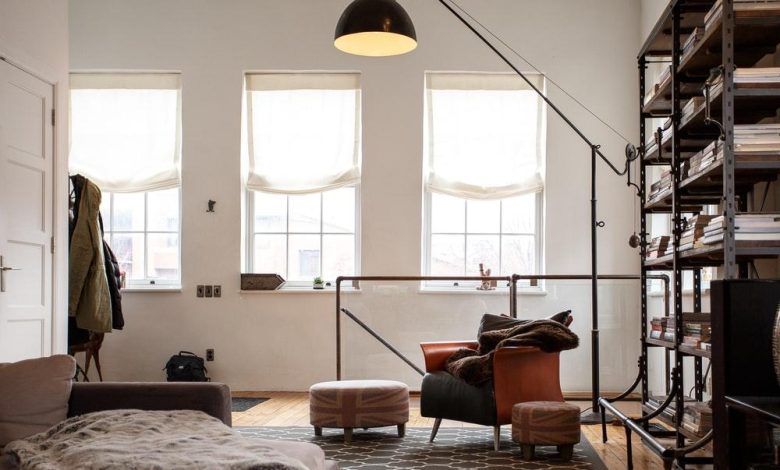Everything a First-Time Loft Renter Should Know

Right from the start, you know that renting an apartment, particularly as a first-time renter, can be truly intimidating. We see it like this because no one is completely prepared for all the searching, running, visiting, and negotiating combo.
First-time renters are often caught in complex processes and small-writing contracts that everyone else seems to know everything about. But because no one is born learned, we’ve assembled a list of renting options and distinctions that every renter should know.
There are different types of loft apartments
Studios, condos, soft lofts, and hard lofts – So what’s the difference?
- Soft lofts & hard lofts
In your search for the ideal abode, your realtor will probably ask you an apparently simple yet perplexing question – “Are you interested in a soft loft or a hard loft?” If you don’t know the answer to that question, here begins your education.
A hard loft, in its truest form, is defined by history. It’s typically an old industrial building or warehouse that has been transformed into a living place. They’re often converted as part of neighbourhood revivals in urban areas and ideal spaces for working and living. If you’re a creative professional, you would likely gravitate to the high concrete ceiling, wide-open layout, oversized windows, and even exposed ductwork.
We call it a “hard loft” because of the many traits that give the space so much character. For example, a hard loft’s construction is typically rugged, thereby receiving its nickname.
On the other hand, a “soft loft” doesn’t have a rugged appearance, but they’ve been rather designed to re-create loft style. They also feature high cement ceilings (but lower than hard lofts), brickwork and large windows. Unlike the elements found in the more historic hard lofts, these elements lack authenticity.
- Loft & condo
Loft and condos are similar in that you can both rent and own them. Lofts are former commercial or industrial buildings that are converted into housing units. Condominiums or condos are residential spaces that are built on the latest high-rise buildings.
Lofts are usually large open spaces located above commercial or industrial buildings. They were originally affordable living and working spaces for artists, but as they’ve become more popular among urban dwellers, they also got pricier.
In appearance, condos are very much like apartments. They come in different sizes and styles, and they’re often owned by different individuals. However, there will probably be areas where buildings are owned by a group of unit owners responsible for maintaining and managing a building.
- Loft & apartment
While lofts can be either owned or rented, apartments can only be rented. Lofts are typically large open units that can function as a “studio” style apartment. Lofts have an open-space design that gives you a lot of freedom to design and decorate, but because they’re so unique and in demand, they also come at a higher price.
However, living in a loft can be different from a standard apartment. No matter how you find one, it’s important to do your research and make sure you know what you’re getting into.
- More freedom to create the space you want
In most apartments and homes, the rooms aren’t very spacious, and thus, your design choices might be limited. Of course, you can break out a wall or change the colours, but most spaces are already set in stone once you move in. Well, that’s not the case with loft units.
According to ReviewOfSolicitors, landlords have a greater purpose of negotiating on cosmetic upgrades when you first sign for your tenancy. Once you’ve figured out what you can do according to your lease agreement, it is time to get moving. You can seek inspiration from online resources or even consider working with an interior designer to bring those ideas to life.
- Lofts are roomy enough
Lofts are basically full of open space. In a loft, you won’t find the things you might be used to, such as shelves and built-in closets, which make it difficult to store a lot of things without having your whole place look like a mess.
Luckily, there’s a range of storage solutions that you can add to your lofts, such as floating shelves, bookshelves, and everything in between. All you have to do is to ensure these shelves suit your loft both in design and practicality. Research the best pieces that you know will fit the overall feel of your space.
- Privacy might be a problem
If you’re ready to live in a loft with a family member or a roommate, be ready to see a lot of them. Perhaps one potential drawback in choosing a loft over an apartment is privacy. Because lofts are typically large single rooms, it might be difficult to live with a roommate or family member without seeing them too often.
While there’s perfectly ok some of the time, there will come a time when you need some alone time or privacy. There’s a good chance a loft will hardly ever offer you the privacy that a standard apartment can offer. However, there are some things you can do to help promote a sense of privacy in your loft. For example, you can add sliding pocket doors, shelving, sheets, and other elements that will help maintain some level of privacy.
Why should you rent a loft?
Lofts are ideal living units for those who cherish privacy, with large windows and walls that give a sense of space. Renting one doesn’t require nearly the amount of cost as a down payment on a mortgage; however, there will still be upfront costs.
For example, some landlords may charge 1 to 3 months of rent upfront, especially if you’re renting for the first time or have bad credit. However, if you’re looking to get the most out of your loft rental, it’s important to know the best time to rent one, things like application fees, security deposits, utility costs, moving costs and amenities. Once you get an idea of what you need and what you can actually afford, you can start looking for a loft apartment in your budget.








